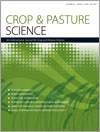CP15053The history of using rainfall data to improve production in the grain industry in Australia—from Goyder to ENSO
Rainfall is the major driver for dryland wheat yields across Australia, and there is a long tradition of research into rainfall distributions and trends in Australia. The aim of this study is to review the history of rainfall data collection, and the efficacy and persistence of different rainfall indices, analytical methods and related forecasts for grain production. Increasing spatial and temporal data density might offer opportunities to revisit simple indicators as seasonal forecasts, which, in combination with climate models and crop models, may deliver new insights and future value for grain producers.




